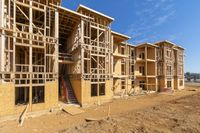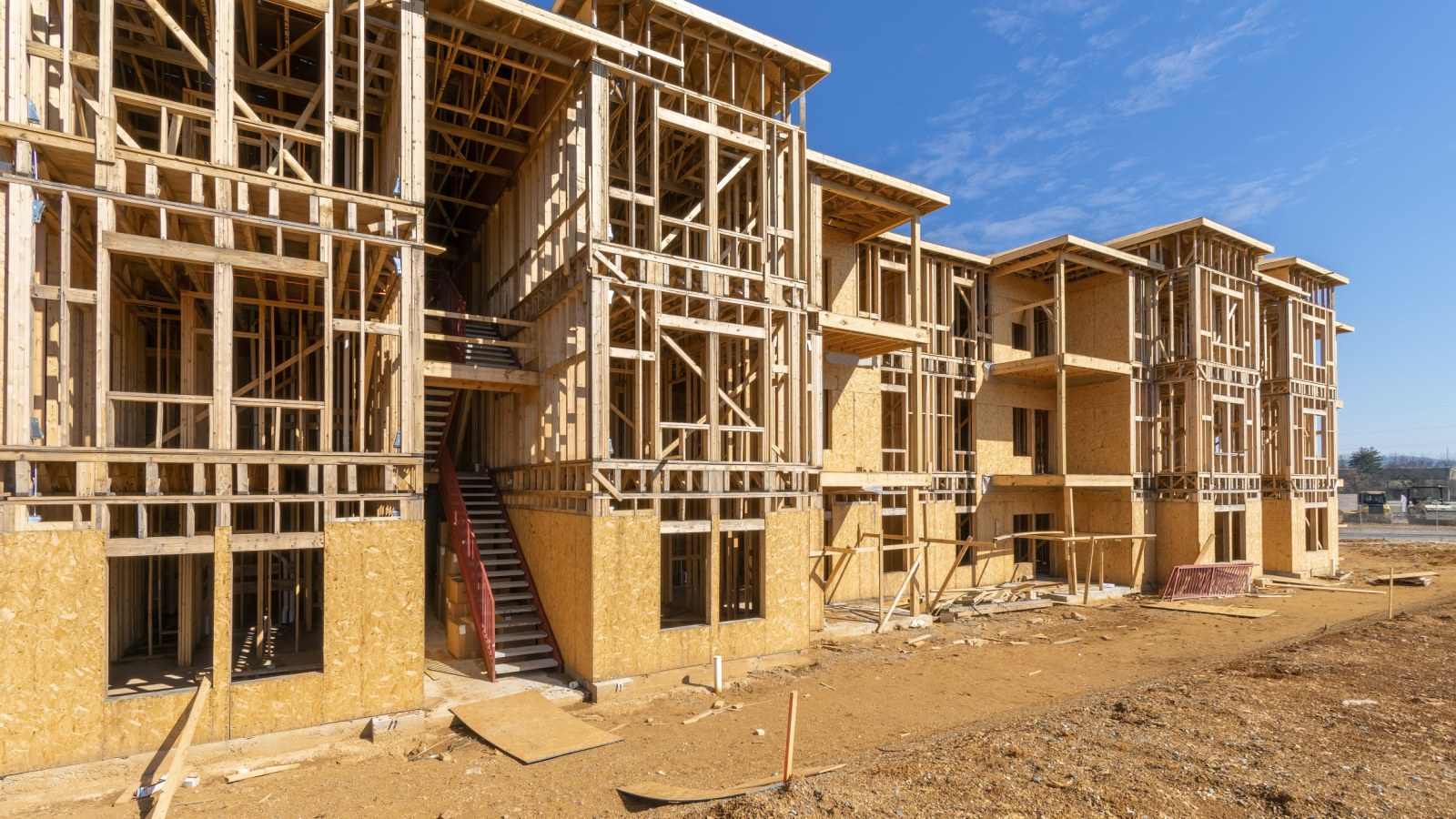Explore web search results related to this domain and discover relevant information.
To understand how we assess your property and calculate your tax bill visit Assessments.
To understand how we assess your property and calculate your tax bill visit Assessments. Health & Welfare · Education · Uniform Agencies (police, Fire, Sanitation, Corrections) Other Agencies (Transportation, Housing, Parks, etc) You will receive a property tax bill if you pay the taxes yourself and have a balance.You will receive a property tax bill if you pay the taxes yourself and have a balance. If a bank or mortgage company pays your property taxes, they will receive your property tax bill.Bills are generally mailed and posted on our website about a month before your taxes are due.You can now receive alerts when payments are credited to your property tax account.

It's a $26 billion housing tax break for the wealthy-but repealing it could rattle the housing market and local economies.
The mortgage interest deduction (MID), a long-standing housing tax break, allows homeowners to deduct interest on up to $750,000 in mortgage debt, encompassing vacation and second homes if they itemize their taxes.Eliminating the second-home mortgage deduction could potentially harm local housing markets heavily reliant on second-home buyers, affecting property values and job growth in tourism-dependent communities. Lawmakers are exploring various solutions, such as Montana's property tax changes, to address inventory shortages and high mortgage rates, with proposals like the No Tax on Home Sales Act aiming to stimulate the market while raising federal revenue, though potential market reactions remain a concern.The debate surrounding the mortgage interest deduction for second homes underscores the delicate balance between tax policy, housing market dynamics, and economic equity, prompting policymakers to carefully consider the implications of any reforms on homeowners and local economies.Amidst a housing market that excludes many potential buyers, a particular group of homeowners benefits from a significant tax break for second homes through the mortgage interest deduction (MID).
Thank you for your interest. Unauthorised access is prohibited. To access this content, you must have prior permission and a valid contract. Please contact our team at [email protected] to discuss licensing options · If you are a Telegraph Subscriber, please contact customerservic...

A federal program will help North Carolina build thousands of new apartments this year, offering affordable rent to residents.
The Low-Income Housing Tax Credit (LIHTC) was created under the Tax Reform Act of 1986 and started allocating credits nationwide a year later. The program incentivizes private developers to build or rehabilitate affordable rental housing by offering federal tax credits.In return, developers agree to maintain rents affordable for low-income households for a time ranging between 15 and 30 years. North Carolina, where home prices have risen by nearly 70 percent between the summer of 2020 and summer of 2025, according to Redfin data, and the average rent is $1,870, is set to add thousands of affordable apartments under the program this year, according to the agency handling the federal tax credits in the state.Developers who obtain the federal tax credits can then sell them at a lower price, usually attracting the attention of large corporate entities that have significant tax obligations. This investment of private capital, according to Farmer, reduces the debt burden on developments, "which, in turn, lowers rents making housing more affordable to more people," he said.The program allocates tax credits to each state on the basis of their population. North Carolina has about $34 million a year. According to Farmer, the program offers developers "a reliable source of financing needed to turn otherwise infeasible housing developments into reality," he said.
The BOE is mandated to prescribe rules and regulations to govern local boards of equalization when equalizing and county assessors when assessing in compliance with the rulemaking procedures adopted by the California Office of Administrative Law. Pursuant to that mandate, the BOE has adopted ...
The BOE is mandated to prescribe rules and regulations to govern local boards of equalization when equalizing and county assessors when assessing in compliance with the rulemaking procedures adopted by the California Office of Administrative Law. Pursuant to that mandate, the BOE has adopted various Property Tax Rules which are contained in Title 18 of the California Code of Regulations.Disaster Relief Information - Property owners affected by California Fires or other California Disasters may be eligible for property tax relief, please refer to our Disaster Relief webpage for more information.
Our property owner webpages include information about assessments, property tax relief, and more. You'll find everything you need to know, whether your property is residential, commercial, agricultural, or vacant.
STAR credits are on the way! The STAR program offers property tax relief to eligible New York State homeowners. To find out when we'll issue checks and direct deposits for your area, use our STAR Credit Delivery Schedule lookup.Important: Our Contact Center representatives cannot provide a specific delivery date. You may receive your check or deposit before or after your neighbor or family member. To see whether we've already issued your STAR credit, or to see prior years' credits, use our Property Tax Credit Lookup tool.Please note, if you're receiving the STAR exemption on your school property tax bill, you won’t receive a STAR check or direct deposit.For more information about STAR, including how to register, visit our STAR resource center. For the latest on property tax and news for homeowners, subscribe to Tax Tips for Property Owners.
The mission of the State Board of Equalization is to serve the public through fair, effective, and efficient tax administration
Disaster Relief Information - Property owners affected by California Fires or other California Disasters may be eligible for property tax relief, please refer to our Disaster Relief webpage for more information.To perform the oversight functions, Property Taxes conducts periodic compliance audits (surveys) of the 58 county assessors' programs, and develops property tax assessment policies and informational materials to guide county assessors and local assessment appeals boards.The BOE acts in an oversight capacity to ensure compliance by county assessors with property tax laws, regulations, and assessment issues.In addition, the BOE assesses the property of regulated railroads and specified utilities, and assesses and collects the private railroad car tax.
AMID A TSUNAMI OF CUTS to the nation’s social safety nets, a golden nugget in the congressional budget bill will allow developers to create more
Starting next year, states will be able to permanently increase tax credit allocations by 12%.In addition, one of the programs has lowered the threshold for certain tax-exempt bonds affordable housing projects must acquire before being eligible for these tax credits, from 50% to 25% of the total costs.These tax credits are given to developers through a competitive process to help with construction costs, with an agreement that these developments remain affordable for 55 years in California. About 3.7 million affordable apartments have been created through the program since its inception. Affordable housing developments are financed through a hodgepodge of local, state, federal and private funding.Due to the limited nature of the funding, many affordable housing developments are languishing until funds are available. Ishimatsu said in the short term, Trump’s budget bill would ease the logjam of developments waiting for their piece of federal funding. “The biggest bottleneck in the process is getting tax credit allocations …Assembly Bill 736 and Senate Bill 417, also known as the Affordable Housing Bond Act of 2026, would provide a $10 billion bond if passed by state lawmakers and voters. “$10 billion sounds like a lot of money, but once that’s spread out over the state, that goes pretty fast,” Ishimatsu said. “We would still need local funding, especially if we want to take full advantage of the newly available tax credits.”

Created by the Tax Reform Act of 1986, the LIHTC program gives State and local LIHTC-allocating agencies the equivalent of approximately $10.5 billion in annual budget authority to issue tax credits for the acquisition, rehabilitation, or new construction of rental housing targeted to lower-income ...
Created by the Tax Reform Act of 1986, the LIHTC program gives State and local LIHTC-allocating agencies the equivalent of approximately $10.5 billion in annual budget authority to issue tax credits for the acquisition, rehabilitation, or new construction of rental housing targeted to lower-income households.The Low-Income Housing Tax Credit (LIHTC) program is the most important resource for creating affordable housing in the United States today.HUD's property database includes information on the size, unit mix, and location of individual projects. HUD’s collection of tenant information includes demographic and economic characteristics of households residing in LIHTC properties from state housing finance agencies that administer the LIHTC program.

California must pursue environmental and infrastructure goals without sacrificing equity or affordability.
Tucked deep into the 137 pages of the housing bill passed by the Legislature in June is language that will allow local governments and regional agencies to impose “vehicle-miles traveled” fees on new housing construction. Marketed as environmental mitigation tools, VMT fees are in reality hidden housing taxes that will land squarely on renters, first-time buyers, and working families.Even more troubling, these costs don’t have to stay in the neighborhoods paying them. Revenue from VMT taxes can be funneled into a statewide fund with no guarantee of local benefit, meaning working-class communities could be forced to subsidize projects miles away while their own housing needs go unmet.Under these provisions, simply living farther from work becomes a penalty, and desperately needed housing projects in these regions could be delayed or abandoned altogether. Assembly Bill 130 gives local and regional agencies sole discretion to impose these taxes, with no cap on how high they can go.That starts with fixing the housing legislation by removing these provisions and ultimately working together for solutions that protect our climate, create jobs, and keep housing within reach for all Californians — urban, suburban, and rural alike. We ask legislators to fix the law as this hidden tax doesn’t move us forward.

Los Angeles Housing Department launches its largest-ever affordable housing funding round, offering $387 million to developers starting Friday. The majority comes from Measure ULA’s “mansion tax” on property sales above $5 million, which has raised over $784 million since 2023.
L.A. Housing Department, and it’s the largest solicitation in the department’s history. The majority is funded by · Measure ULA, the so-called “mansion tax” that charges a transfer tax to all L.A.Housing Department General Manager Tiena Johnson Hall called it “historic moment,” saying that the funding will go toward not only new construction, but housing preservation and operating assistance funding. The $387 million — which consists of $316 million from ULA funds and $71 million from state and federal programs — represents the city’s biggest commitment of ULA spending since the measure took effect in 2023. The tax has raised more thanCategories include multifamily construction, affordable housing construction, affordable housing preservation and construction of adaptive reuse projects, such as turning empty commercial buildings into housing. The money is awarded as either gap financing or soft loans, which have little or no interest. Critics of Measure ULA claim that the tax has stifled commercial development and slowed sales.$784 million in the last 2½ years, but much of it hasn’t been spent due to concerns that the tax could be overturned in court. ... Johnson Hall said the department doles out funding to housing projects every few years, but typically within the range of $50 million to $75 million, so the $387-million NOFA is a massive step up.
A federal program will help North Carolina build thousands of new apartments this year, offering affordable rent to residents.
The Low-Income Housing Tax Credit (LIHTC) was created under the Tax Reform Act of 1986 and started allocating credits nationwide a year later. The program incentivizes private developers to build or rehabilitate affordable rental housing by offering federal tax credits.In return, developers agree to maintain rents affordable for low-income households for a time ranging between 15 and 30 years. North Carolina, where home prices have risen by nearly 70 percent between the summer of 2020 and summer of 2025, according to Redfin data, and the average rent is $1,870, is set to add thousands of affordable apartments under the program this year, according to the agency handling the federal tax credits in the state.Developers who obtain the federal tax credits can then sell them at a lower price, usually attracting the attention of large corporate entities that have significant tax obligations. This investment of private capital, according to Farmer, reduces the debt burden on developments, "which, in turn, lowers rents making housing more affordable to more people," he said.The program allocates tax credits to each state on the basis of their population. North Carolina has about $34 million a year. According to Farmer, the program offers developers "a reliable source of financing needed to turn otherwise infeasible housing developments into reality," he said.


– Sept. 9, 2025 – The Delaware State Housing Authority (DSHA) has announced its preliminary project awards for the 2025 low-income housing tax credit (LIHTC) allocation cycle. Four development projects will receive allocations, bringing the creation of 105 affordable units and the […]
$3.18 million in funding to build and preserve affordable housing in Delaware Dover, Del. – Sept. 9, 2025 – The Delaware State Housing Authority (DSHA) has announced its preliminary project awards for the 2025 low-income housing tax credit (LIHTC) allocation cycle.Governor Meyer Signs House Bill 1 Establishing Veterans Affairs Department With Cabinet-Level Secretary Date Posted: August 13, 2025 · Primo Maschio, Lew Not Lou Take DSBF Splits Date Posted: August 13, 2025 · DSBF 3-Year-Old Stakes Headline June 16-18 Harrington Racing Date Posted: August 13, 2025 · Governor Meyer, Legislature Deliver Property Tax Relief And Reform Date Posted: August 13, 2025Recipients were selected based on criteria outlined in DSHA’s Qualified Allocation Plan, which include Area Median Income (AMI) rent restrictions, location, accessibility, development amenities, and more. The equity raised through the tax credit investment allows developers to attract the additional financing needed to create or preserve low-income rental housing.The LIHTC was created in 1986 to encourage private/public investment to preserve and construct affordable rental housing nationwide. Alone and combined with tax-exempt private activity bonds, the LIHTC has been the most productive source of affordable housing financing in the nation’s history.
The Department of Finance has recently redesigned its website and this page has moved. Please update your bookmark to: https://www.nyc.gov/site/finance/property/property.page · You will be redirected in 5 seconds, or click on the link above

Most of the money — $316 million — comes from Measure ULA, a transfer tax on property sales above $5 million that voters approved in 2022.
Eligible applicants include nonprofit and for-profit developers, community land trusts, limited equity housing cooperatives, public entities and other organizations, the Los Angeles Times reported. Most of the money — $316 million — comes from Measure ULA, a transfer tax on property sales above $5 million that voters approved in 2022.Measure ULA — sometimes referred to as the “mansion tax” — has drawn both support and criticism. Opponents argue slows commercial development and reduces property sales. Supporters say it provides the city with a crucial tool to address housing shortages and homelessness.Jonathan Delozier is a veteran journalist with more than a decade of newsroom experience. In addition to housing and real estate coverage, he has provided detailed analysis of local government, public schools, the COVID-19 pandemic, numerous criminal trials, and the national opioid epidemic.see full bioLos Angeles will make $387 million available for affordable housing projects — reportedly the largest single funding round in the city housing department history.

Advocates for more affordable housing units in Denver are floating the idea of what's known as a "Ghost Tax" or VHT- vacant home tax- on Denver landlords as a new way to raise money to create more affordable housing in Denver.
Advocates for more affordable housing units in Denver are floating the idea of what's known as a "Ghost Tax" or VHT- vacant home tax- on Denver landlords as a new way to raise money to create more affordable housing in Denver. These kinds of taxes or fees are imposed on landlords whose properties are vacant and not rented for an extended period of time- typically about six months.The letter, obtained by CBS News Colorado, outlines numerous potential strategies to create more affordable housing in Denver. Measure 2R, pushed by Mayor Johnston, would have imposed a .05% sales tax in Denver to raise hundreds of millions of dollars for affordable housing, but the measure narrowly lost at the hands of voters last November.This approach", said the letter, "is preferable than potentially taxing unoccupied second homes in Denver as there is less likely to be an abundance of such homes." Cathy Alderman, Chief Communications and Public Policy Officer for the Colorado Coalition for the Homeless, and one of the authors of the letter, said, "It's our responsibility to be thoughtful about how to bring in the desperately needed revenue to make housing affordable for Denverites."Vancouver began an empty home tax (EHT) in 2017 that levies a tax of 3% of the property's assessed value if it is vacant for more than six months of the year. Alderman emphasized the proposal being floated now is aimed at corporate landlords with high vacancy rates, not at "mom and pop" landlords or owners of accessory dwelling units. Jordan Fuja, a spokesperson for Mayor Michael Johnston, said, "We are always looking for creative housing solutions and welcome new ideas from our community partners.
Sacramento County's Online Property Tax Bill Information System

The ghost tax would act as a fee on rental units left vacant for an extended period.
Those behind the proposed ghost tax say it would act as a fee on rental units left vacant for an extended period and also operate as a new revenue stream to help create affordable housing by encouraging owners to rent or sell empty properties.Advocates frame the measure as a response to a housing shortage and a means to push corporate landlords to make units available and affordable amid a high number of empty rental units in the Denver metro area. The proposal follows the defeat of Measure 2R, a sales-tax initiative championed by Democratic Mayor Mike Johnston that voters rejected earlier this year, and the advocates have presented the vacancy fee as an alternative path to finance affordable housing efforts.Ryan told Newsweek: "Vacant properties lose value rapidly, and with lost value comes lost property tax revenue. Most landlords already have strong financial incentives to fill units quickly, right? The ones keeping properties empty either can't find qualified tenants or are dealing with major repair issues..." "It's a revenue grab disguised as housing policy.If Denver really wants affordable housing, they need to tackle zoning restrictions and permitting delays that make new construction prohibitively expensive. Ghost taxes just give politicians something to point to while the real problem festers."

California’s future depends on getting housing policy right.
Though the housing tax has been branded as “optional”, in practicality, local governments, who often look for any excuse to deny new housing, have full discretion to decide whether it applies and at what level.Proponents of the tax argue it will fund affordable housing and reduce driving, but the legislation does not guarantee that the money will stay in the community where it’s collected. Instead, it can be pooled into a statewide fund with little accountability and no certainty that local residents will see a direct benefit.AB 130 contains some important housing reforms, but those reforms mean nothing if we create a costly new tax on housing. The VMT housing tax provisions are a serious misstep that will undermine the very policies they are meant to complement.That new law, Assembly Bill 130, will create a new Vehicle Miles Traveled (VMT) housing tax that affects the vast majority of new housing projects in the state.

The tax can be attributed to the state aiming to reduce car trips by 50% by 2035 by taxing new developments based on vehicle miles traveled.
The existence of the tax can be attributed to the state aiming to reduce car trips by 50% by 2035, by taxing new developments based on their potential vehicle miles traveled. “The state thinks that they need money to build housing for low income families, subsidized housing,” said Lori Holt Pfeiler, president and chief executive officer of the San Diego County Building Industry Association, which is a partner in the coalition.A new California tax could add up to $324,000 per unit to development costs, affecting new homeowners, developers and contractors, according to a coalition group called CARE Housing.The Vehicle Miles Traveled tax will disproportionately affect low-income households and people of color, she said.The effects of these new taxes are massive, according to a Caltrans-funded study on VMT housing taxes, and will negatively affect many California residents.

